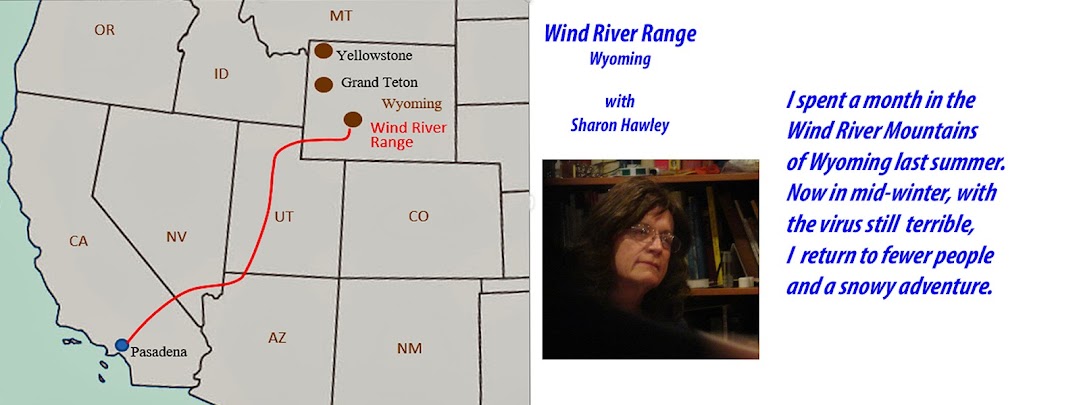
 I had a plan for this
trip—escape the pandemic and go to Wyoming where incidence was low, restrictions
almost nil, and where clear air and wilderness awaited a pent-up hiker. After six weeks of solo adventuring, I would
come back to Pasadena when the pandemic would be mostly ended. While gone, I would send inspiring blog
posts, then return, and we would all have fun again. And so it was for five weeks.
I had a plan for this
trip—escape the pandemic and go to Wyoming where incidence was low, restrictions
almost nil, and where clear air and wilderness awaited a pent-up hiker. After six weeks of solo adventuring, I would
come back to Pasadena when the pandemic would be mostly ended. While gone, I would send inspiring blog
posts, then return, and we would all have fun again. And so it was for five weeks.  Starting from a
rabbit hole, in which a long rocky history of this place was explained to me by
geologists, I emerged to the surface experience of seeing, feeling, and contemplating
the Wind River Mountains. I am almost on my way home after millions of
years. I had thought it would be a
beautiful, well planned, moment. But that’s all gone now.
Starting from a
rabbit hole, in which a long rocky history of this place was explained to me by
geologists, I emerged to the surface experience of seeing, feeling, and contemplating
the Wind River Mountains. I am almost on my way home after millions of
years. I had thought it would be a
beautiful, well planned, moment. But that’s all gone now.  |
| I can photoshop out some of the smoke, but the left picture is real |
 My plan started well, but the result that
followed was simply wretched—a descending
chain of events not planned for. It isn’t
easy to think of something comforting to say.
They call the eastern Tennessee mountain range “Smoky,” for the haze that
usually envelopes it, but the Wind River Mountains, known for clear, dry, high
elevation air, have changed. It’s not our
smoke (I speak to you Californians) that covers these mountains, it’s
yours. It must be hell there, judging from
the amount of smoke the wind has brought all the way to Wyoming.
My plan started well, but the result that
followed was simply wretched—a descending
chain of events not planned for. It isn’t
easy to think of something comforting to say.
They call the eastern Tennessee mountain range “Smoky,” for the haze that
usually envelopes it, but the Wind River Mountains, known for clear, dry, high
elevation air, have changed. It’s not our
smoke (I speak to you Californians) that covers these mountains, it’s
yours. It must be hell there, judging from
the amount of smoke the wind has brought all the way to Wyoming.  |
| Surprise sunrise on August 21 |
 |
| A normal sunrise in Pinedale, Wyoming |
Before sunrise, a thick eerie orange cloud foreboded a sun that rose dark orange. The day and the sun were so dark that at mid-morning I looked directly at the sun without fear of eye injury. As it happened the pandemic in Pasadena was increasing.
A Lake about half a mile away is clearly seen below me, but the lake below it is hazy with smoke.
my tent set up on a
million-dollar lot
to own a lovely lake
a chipmunk came to
visit
a woodpecker thumped
a tree
slid across the lake
on a film of surface
tension
their shadows
on the shallow bottom
in water surface
like Einstein rings
of gravitational
lensing
a leaf of grass
explains
back to where they started
lifted high only for
a time
they crack and break
and may eventually be
buried













































